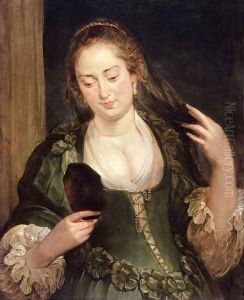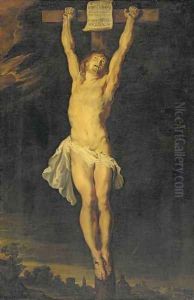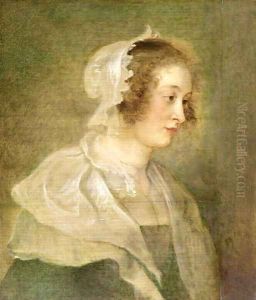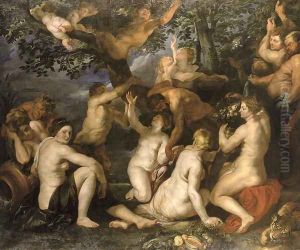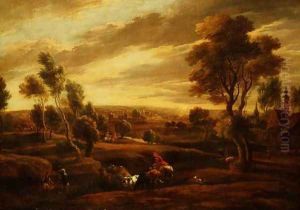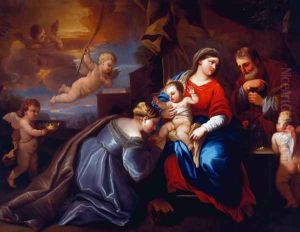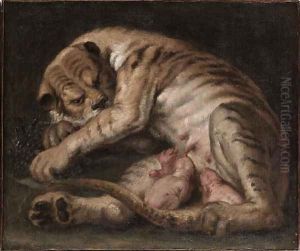(follower of) Rubens, Peter Paul Paintings
Peter Paul Rubens was a towering figure in the Baroque art movement, celebrated for his expressive, dynamic, and highly charged works that epitomize the Baroque's fascination with motion, color, and sensuality. Born on June 28, 1577, in Siegen, Nassau-Dillenburg (now in Germany), Rubens was a Flemish artist who spent most of his life in Antwerp, which was then part of the Spanish Netherlands. His upbringing was marked by a comprehensive humanistic education and a profound immersion in classical antiquity, which significantly influenced his later work. In 1598, Rubens was recognized as a master painter, and his early travels to Italy, from 1600 to 1608, played a crucial role in his development as an artist. In Italy, he was deeply influenced by the works of Renaissance masters like Titian, Veronese, and Tintoretto, as well as the dramatic compositions of Caravaggio. This period was instrumental in shaping his distinctive style, which combined the robust, heroic tradition of the High Renaissance with the dynamic, emotional quality of the emerging Baroque movement. Upon returning to Antwerp, Rubens's career flourished. He received numerous commissions from the ruling elites of Europe, including Marie de' Medici of France and Philip IV of Spain. His output was prolific, encompassing historical and mythological scenes, religious subjects, portraits, and landscapes. Notably, Rubens also ran a large workshop, which was crucial in executing his commissions and contributed to his significant influence on subsequent generations of artists. His workshop produced not only paintings but also designs for tapestries, prints, and book illustrations, making Rubens a central figure in the cultural life of 17th-century Europe. Beyond his artistic achievements, Rubens was a diplomat, linguist, and scholar, embodying the Renaissance ideal of the 'universal man.' His diplomatic missions, including efforts to negotiate peace between Spain and England, further cemented his status as a key figure in European cultural and political life. Rubens's influence extended far beyond his lifetime, inspiring countless artists across Europe. His followers and imitators, known as 'followers of Rubens,' continued to propagate his style, which remained influential well into the 18th century. Rubens's legacy is characterized by his ability to blend the physicality and emotion of the Baroque with classical themes and compositions, creating a body of work that remains pivotal in the history of Western art. Peter Paul Rubens passed away on May 30, 1640, in Antwerp, leaving behind a legacy that continues to inspire admiration and study for its vitality, ingenuity, and profound humanity.
